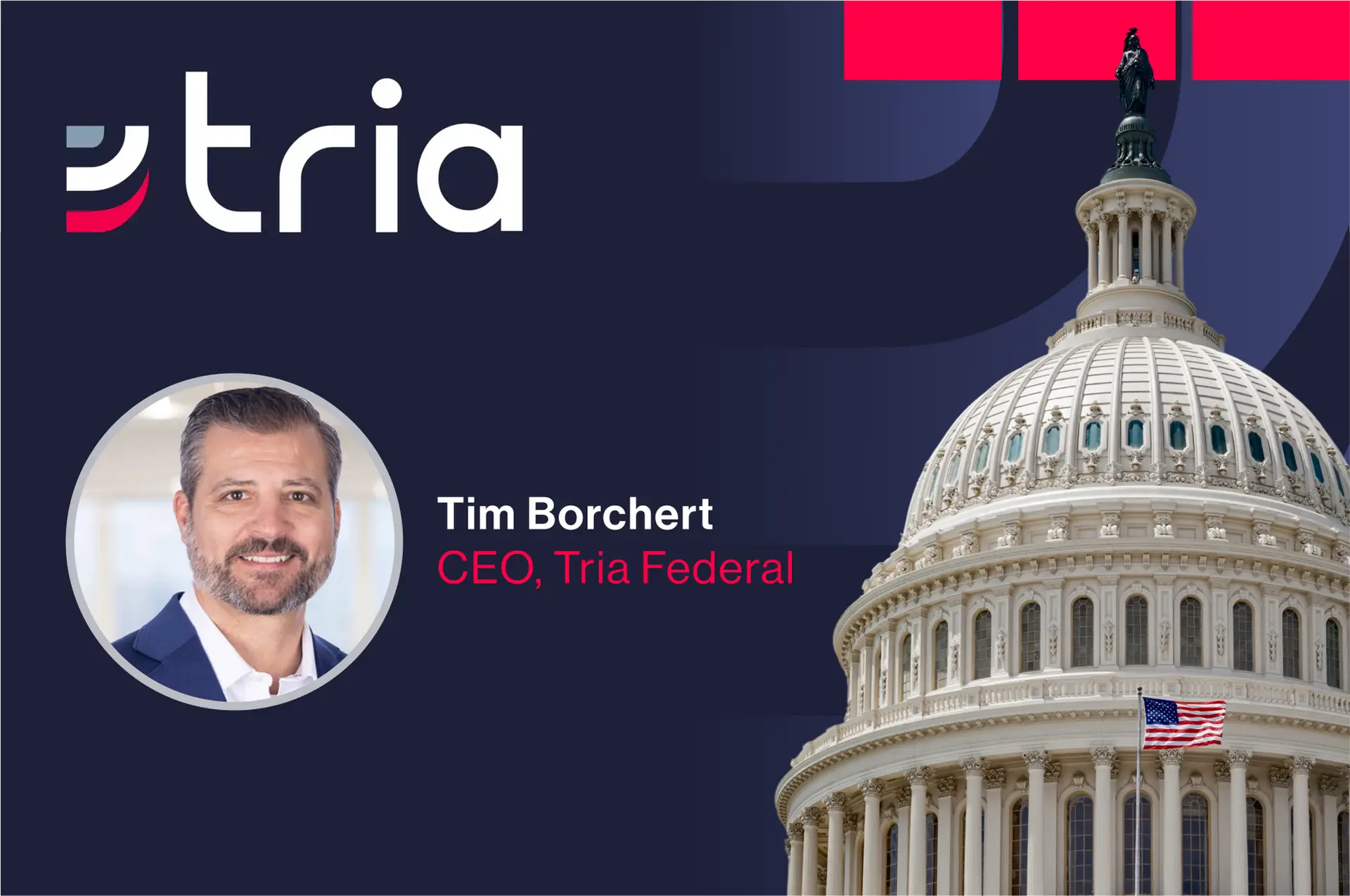Tria Federal CEO Tim Borchert shares his perspective on “the healthcare trilemma” – the constant struggle of balancing the tradeoffs between cost, quality, and access – and the unprecedented challenges and opportunities in federal modernization, particularly as agencies face growing pressure to transform their digital operations.
Breaking with Tradition
The pandemic exposed critical gaps in our federal healthcare systems that we can’t ignore. Now throw in the new administration’s focus on efficiency and effectiveness, and the challenges look even more significant. It’s not just about outdated technology – it’s about fundamentally transforming how agencies approach their missions.
The traditional model of federal healthcare technology is breaking down. Legacy systems and fragmented data infrastructure impede real-time decision-making. Growing cybersecurity threats add complexity to every modernization effort. Most critically, agencies find themselves forced to choose between maintaining current operations and investing in future capabilities.
That’s a false choice. Agencies need to do both simultaneously. They need to break down data silos while enhancing security, leverage human-centered design, and enable rapid iteration while ensuring program stability.
This vision is driving recent moves at Tria Federal. In November, we acquired Softrams, a Tria Federal Company, a leading technology firm specializing in human-centered digital services. The combination brings together 1,400 employees supporting more than 20 federal health and public safety agencies, with deep roots in the Department of Veterans Affairs (VA), the Defense Health Agency (DHA), and the Centers for Medicare and Medicaid Services (CMS), where Softrams has built a reputation for driving innovation while maintaining performance during periods of transition.
Reorganizing for Impact
The acquisition of Softrams coincided with a significant reorganization at Tria, where we aligned around three customer-centric business units: Military and Veteran Health, Public Health, and Public Safety, which focuses on homeland security and defense customers.
We also established five integrated service lines that span all three business units. These service lines are results management, integrated health optimization, next-generation analytics, financial transformation, and digital modernization. Each service line brings together cutting-edge technical expertise and digital services informed by deep customer expertise and relationships.
This structure reflects where federal healthcare is heading. Agencies need partners who understand both their mission context and the art of the possible in technology. You can’t separate customer intimacy from technical implementation if you want to be a best-in-class partner to the government.
As a next step, we are working to integrate Softrams’ various technology practices so that they seamlessly support the service lines and business units.
The AI Imperative
Artificial intelligence is increasingly becoming the common “integration layer” spanning Tria’s services, essential for core functions like detecting fraud, processing claims, and delivering care. But successful transformation requires more than just implementing new technology.
Agencies need to fundamentally transform how they approach data collection, analysis, and service delivery. Our goal is to help them leverage real-time data to improve healthcare outcomes while reducing costs.
This means building systems that can share information seamlessly while maintaining robust privacy protections, automating routine processes while freeing staff to focus on high-value activities, and enabling data-driven decisions through integrated analytics platforms.
A Proven Path Forward
Recent modernization efforts have demonstrated that agencies can successfully upgrade mission-critical systems while maintaining operational continuity. Federal agencies are taking steps like implementing real-time data platforms that improve decision-making and deploying AI-enabled solutions that augment human capabilities rather than replace them.
These aren’t just isolated successes. They represent a repeatable methodology for transforming how federal agencies achieve their critical missions in the digital age.
Looking ahead, I am optimistic about Tria’s ability to deliver value to the federal government and minimize the negative trade-offs associated with the healthcare trilemma. Through our technology innovation group, Tria Labs, we are already developing and testing AI and other emerging technologies associated with low-code/no-code development, intelligent automation, and cybersecurity.
When agencies have the right approach and partners, they can navigate the complexity of modern government operations while delivering meaningful improvements in service to citizens. This isn’t a far-off vision – it’s achievable today.
To learn more about how Tria Federal can help your agency transform the way it achieves its mission, contact us today.
Tim Borchert is Tria Federal’s Chief Executive Officer. An earlier version of this article was published by Orange Slices.



